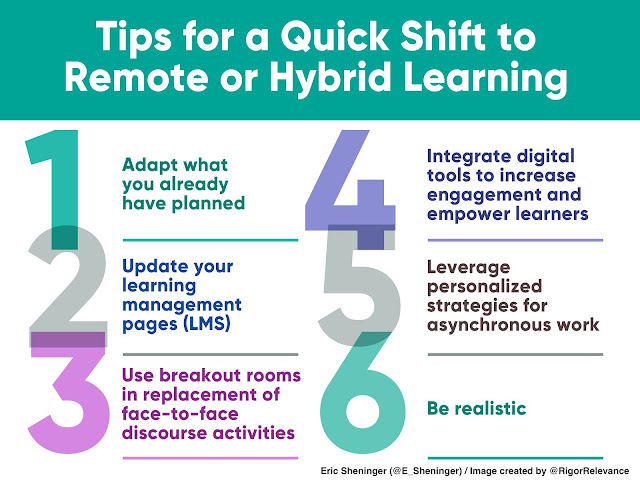The other day I was with one of my partner districts as part of ongoing longitudinal work that will last at least two years. As I was facilitating a model lesson near the end of the school day with a group of teachers and administrators, a staff member came by the room to inform everyone that the district would be going remote the rest of the week. An email was also sent informing all educators to plan for an asynchronous day of learning on Thursday and synchronous on Friday. Naturally, I ended the session a little early so they could begin to map out the rest of the week, but I also had planning to do in terms of converting my face-to-face sessions with the leadership team to virtual that was scheduled for the next day.
Unfortunately, what I have described above has become quite common as of late. COVID-19 has roared back with the highly transmissible Omicron variant resulting in scaled disruption. Schools are having immense trouble staffing their buildings or even getting kids to school as bus drivers must go out on quarantine. In this case, the result has been an abrupt shift to remote learning. The other scenario that has panned out has been many children succumbing to the virus and being quarantined or families keeping their kids home as a safety measure. In this scenario, a decision to move to hybrid learning has been made.
Undoubtedly, this is a very stressful time for educators, but their resilience and flexibility have, and continue to, shine through to make things work. Remember, we have been here before, and there is no need to reinvent the wheel. I have been going back through some of my most-read posts ever, and many of them are on the topics of remote and hybrid learning. You can access all these curated on a Pinterest board HERE. Below are some straightforward tips that will help you get through this without losing your mind:
- Adapt what you already have planned (don't reinvent the wheel)
- Update your learning management pages (LMS) such as Canvas, Schoology, or Google Classroom so kids can seamlessly access all assignments and tasks
- Use breakout rooms in replacement of face-to-face discourse activities
- Integrate digital tools to increase engagement and empower learners
- Leverage personalized strategies for asynchronous work such as choice boards, must-do/may-do, playlists, and flipped lessons.
- Be realistic (substance over quantity, prioritize standards)
There is nothing inherently new in the tips provided above. The key is to remember pivotal lessons learned during the great remote and hybrid experiment of 2020 and parts of 2021 to power through what I hope is only a couple of weeks. Effective leadership in these unpredictable times is not only needed but greatly appreciated. Finding additional resources for staff and freeing up time to plan are two quick wins that won’t go unnoticed. Together, you’ve got this, and if there is anything I can do, please don’t hesitate to reach out (esheninger@gmail.com).

No comments:
Post a Comment